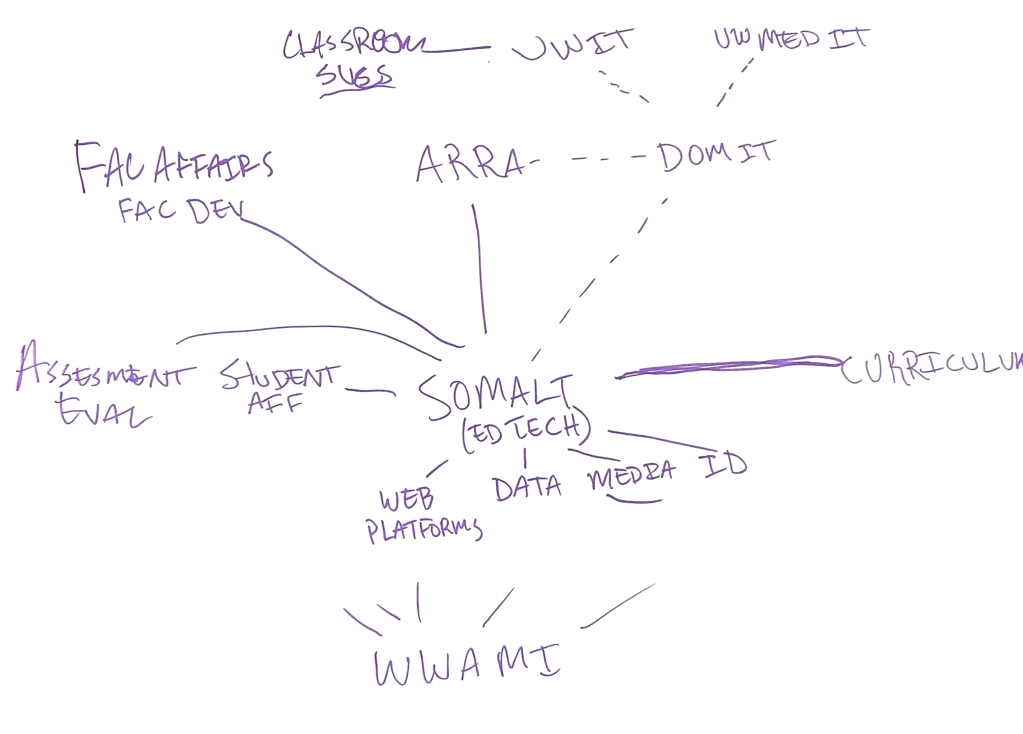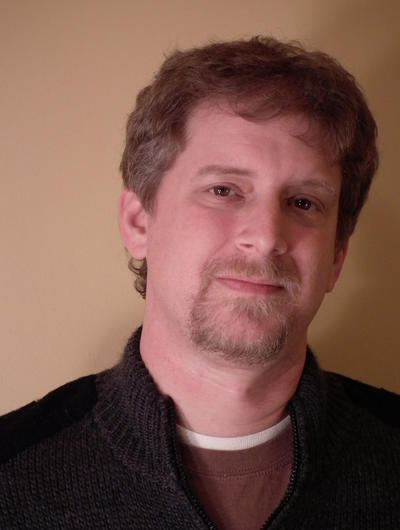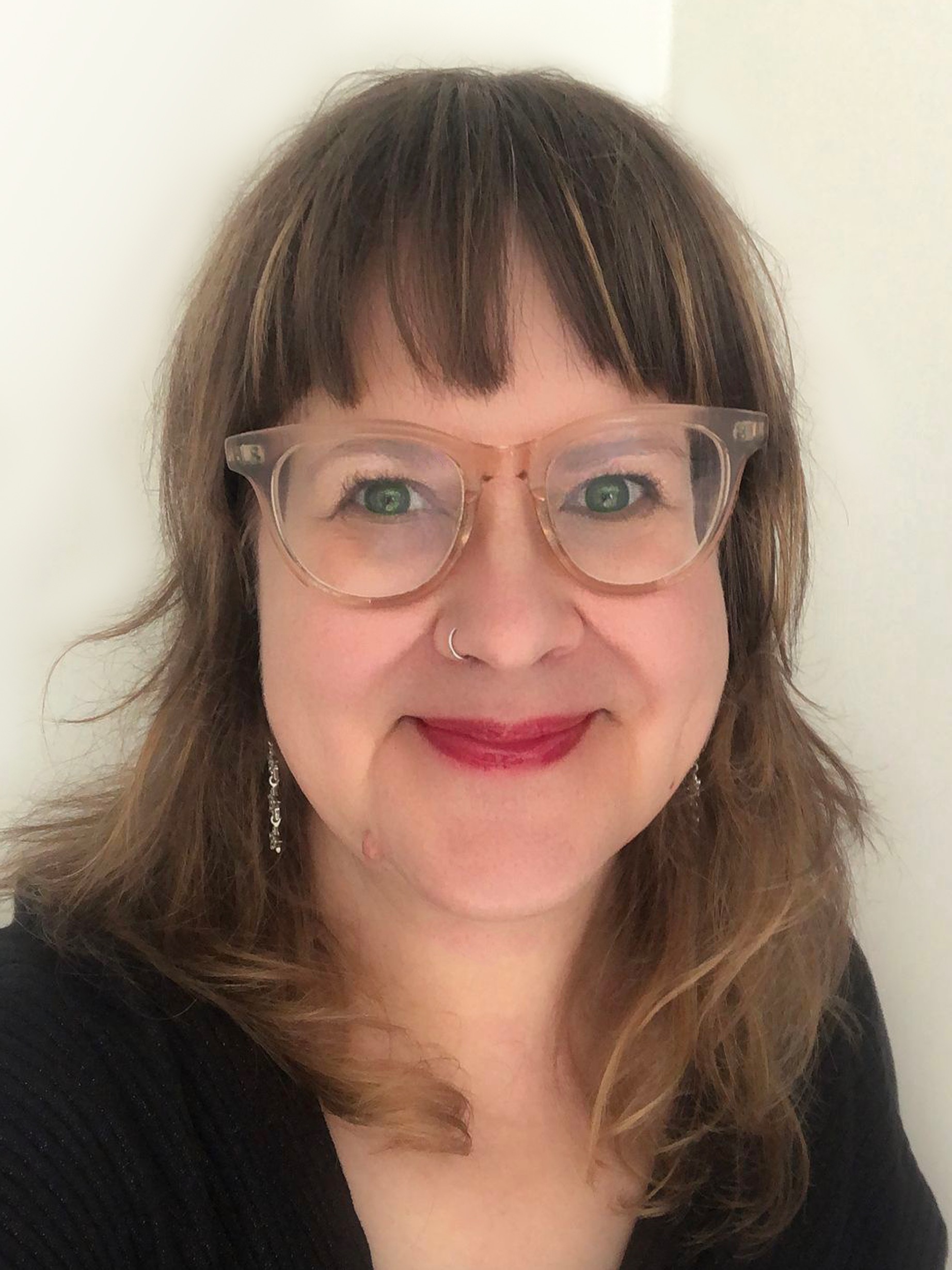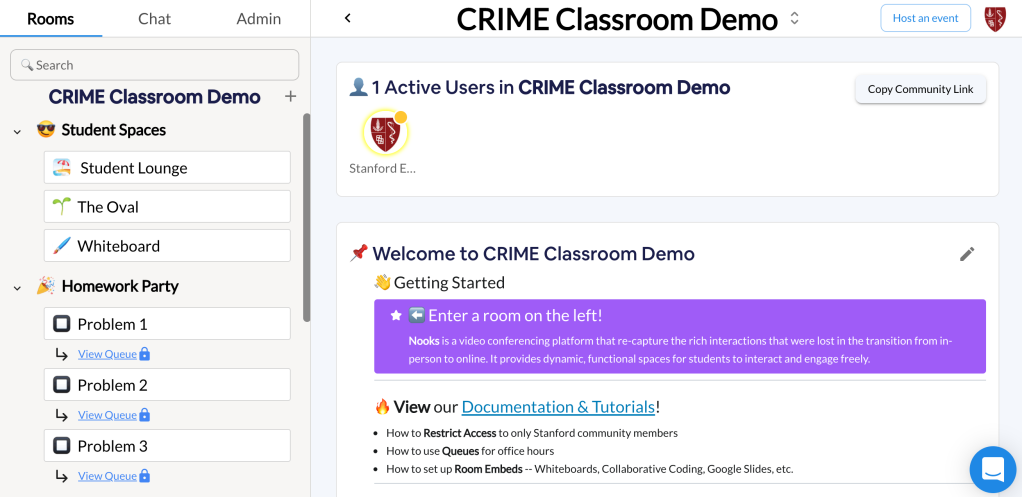
CRIME members gathered for an un-conference on Thursday afternoon as a pre-conference before the Friday morning start of the 2022 Western Group on Educational Affairs conference hosted in Portland, OR by Oregon Health Sciences University. Representatives from the University of Colorado Anschutz Medical Campus, Stanford University, UCSF-Fresno, University of Nevada – Reno, University of Washington, and Kaiser Permanente Medical School shared successes from the past year and posed questions to the group in areas of curiosity or concern. The unconference activity revealed several themes to explore over the afternoon.
To start, each school diagrammed their structures of technology support. The organizational structures illustrated a great diversity of approaches to supporting MD students and curricula. Additionally, the diagrams reveal the range of organization of the academic medical centers.
Stanford

Stanford Medicine EdTech is a part of the IT organization supporting both the SoM and the health care system. EdTech reports up through the health care system organizational structure. We have a director and three teams, each with a manager, covering the services in the clouds at the bottom of our chart. We collaborate with many other teams indicated by the dotted line relationships listed on both sides. In addition we also have a project manager who reports to the IT Project Management Office, but whose primary client is EdTech.
UCSF-Fresno
The UCSF Fresno is a Regional campus of UCSF main campus. Our program The San Joaquin Valley PRIME (Program In Medical Education) is housed within the UME
department of UCSF Fresno. We have a local IT department that helps us with various IT needs, such as any classroom help, anydesktop equipment and/or issues, any AV needs, and with any special projects we need. Our
IT Systems Admin Manager stays connected with Chandler Mayfield to ensure we are up to date and connected with main campus.
We are extremely lucky to have such a great team upstairs to help with our Med Ed Tech needs. We do still utilize UCSF main campus IT Services serves for the following applications, UCSF emails, and anything on MyAccess: HBS, Ilios, CLE, BearBuy, MyExpense, Smartsheet,
People Connect, etc.

University of Nevada – Reno

Organizational Sketch of CRIME at University of Nevada Reno School of Medicine (One person’s perspective. KCF 20220404 1720)
1- First there are Learners.
Everything supports that. In light blue from left to right, Campus provides rooms (lecture halls, small group rooms and an anatomy laboratory) and Campus IT provides ethernet worked facilities, lecterns and projection equipment [think infrastructure and hardware]; the Office for Medical Education [think program and scheduling and software support] provides quiz software Canvas scheduling and materials distribution and personnel (teachers) deployment and lastly the Office for Faculty provides emotional and intellectual support to the personnel [think about instructional design support for faculty and P&T support here].
2- Student Affairs supports students’ bodies and emotional aspects. Separately, the Library supports their learning machines and some of their external learning resources [Osmosis, Sketchy]).
3- Our office for Continuous Institutional Advancement handles accreditation, some aspects of student organizational evaluation (GQ, Y2Q, ISS) and data governance.
4- Both our Office for DEI and down-campus support our diverse and inclusive climate. 5- All of this sits upon the teaching hospital learning environment, Renown Health system (they have their own IT support and physical culture support systems (EPIC). The dotted line around Renown indicates a brand new and complex relationship.
University of Washington
The UWSOM Academic & Learning Technologies department in Seattle supports technology use for medical student education and includes four teams: web platforms, media production and delivery, data, and instructional design. We report up to the Vice Dean for Academic, Rural, and Regional Affairs, with a dotted line relationship to the SOM-IT department. We operate in tight collaboration with the schools Curriculum and Assessment teams, while also working with and relying on multiple other parts of the organization within and outside of the SOM, including the Department of Faculty Affairs and the Health Sciences Classroom Support group, which oversees classroom AV in shared spaces across the different health professions programs. We also work with faculty, administrators, and operational support teams at each of the five other WWAMI Foundations Curriculum sites in Spokane WA, Laramie WY, Anchorage AK, Bozeman MT, and Moscow ID, providing technology training, consultation, and support for certain shared processes and platforms, as well as for many operational and teaching activities across this five state region.

University of Colorado

The MD program has layers of technology support. Campus-wide the Office of Information Technology supports the infrastructure and enterprise systems. The School of Medicine Information Services provides desktop support for the administrative staff, supports the applications of the MD program and has recently added project managers to aid in the implementation of new systems and new curriculum. Within the Office of Medical Education, directors of curriculum and ed tech and instructional design implement and train on the software and systems of curriculum delivery and evaluation and student assessment. This onion of support works with dedicated people at every level who seek out areas for improvement and are open to communication across the institution.

























